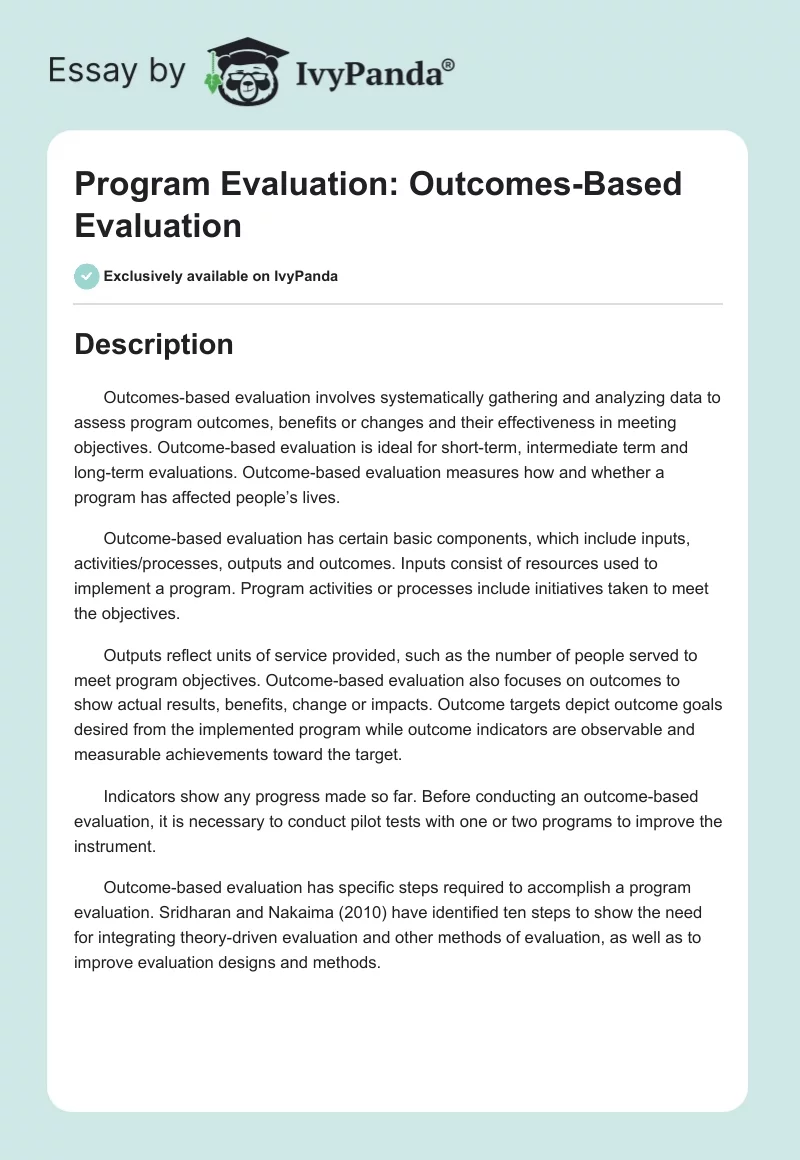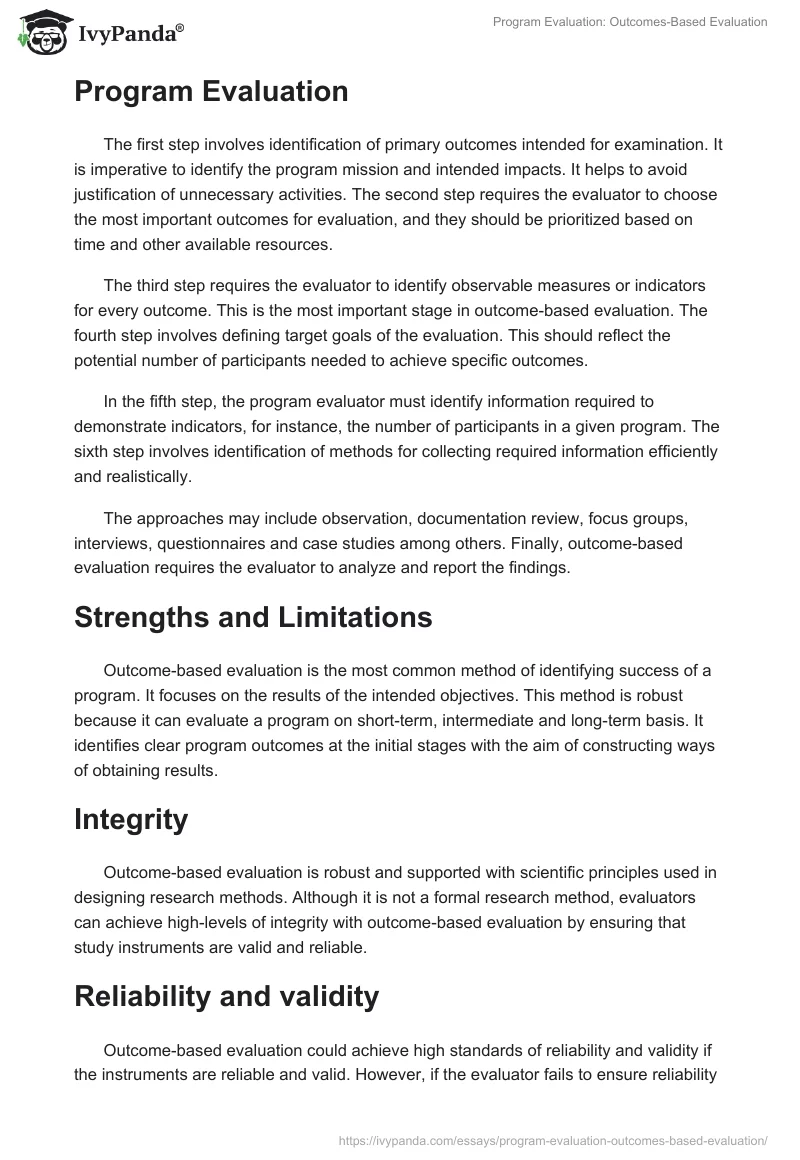Description
Outcomes-based evaluation involves systematically gathering and analyzing data to assess program outcomes, benefits or changes and their effectiveness in meeting objectives. Outcome-based evaluation is ideal for short-term, intermediate term and long-term evaluations. Outcome-based evaluation measures how and whether a program has affected people’s lives.
Outcome-based evaluation has certain basic components, which include inputs, activities/processes, outputs and outcomes. Inputs consist of resources used to implement a program. Program activities or processes include initiatives taken to meet the objectives.
Outputs reflect units of service provided, such as the number of people served to meet program objectives. Outcome-based evaluation also focuses on outcomes to show actual results, benefits, change or impacts. Outcome targets depict outcome goals desired from the implemented program while outcome indicators are observable and measurable achievements toward the target.
Indicators show any progress made so far. Before conducting an outcome-based evaluation, it is necessary to conduct pilot tests with one or two programs to improve the instrument.
Outcome-based evaluation has specific steps required to accomplish a program evaluation. Sridharan and Nakaima (2010) have identified ten steps to show the need for integrating theory-driven evaluation and other methods of evaluation, as well as to improve evaluation designs and methods.
Program Evaluation
The first step involves identification of primary outcomes intended for examination. It is imperative to identify the program mission and intended impacts. It helps to avoid justification of unnecessary activities. The second step requires the evaluator to choose the most important outcomes for evaluation, and they should be prioritized based on time and other available resources.
The third step requires the evaluator to identify observable measures or indicators for every outcome. This is the most important stage in outcome-based evaluation. The fourth step involves defining target goals of the evaluation. This should reflect the potential number of participants needed to achieve specific outcomes.
In the fifth step, the program evaluator must identify information required to demonstrate indicators, for instance, the number of participants in a given program. The sixth step involves identification of methods for collecting required information efficiently and realistically.
The approaches may include observation, documentation review, focus groups, interviews, questionnaires and case studies among others. Finally, outcome-based evaluation requires the evaluator to analyze and report the findings.
Strengths and Limitations
Outcome-based evaluation is the most common method of identifying success of a program. It focuses on the results of the intended objectives. This method is robust because it can evaluate a program on short-term, intermediate and long-term basis. It identifies clear program outcomes at the initial stages with the aim of constructing ways of obtaining results.
Integrity
Outcome-based evaluation is robust and supported with scientific principles used in designing research methods. Although it is not a formal research method, evaluators can achieve high-levels of integrity with outcome-based evaluation by ensuring that study instruments are valid and reliable.
Reliability and validity
Outcome-based evaluation could achieve high standards of reliability and validity if the instruments are reliable and valid. However, if the evaluator fails to ensure reliability and validity of the instrument, then the method may lack effectiveness. Low response rates, design method and collection of detailed data could be significant sources of weaknesses.
Overall, the strength of outcome-based evaluation is in ownership. It is a tool designed by an organization to serve its management processes and projects, and therefore there is a great deal of ownership over the process, which enhances how findings will be utilized to fulfill different purposes.
References
Chen, Y.-M., Hedrick, S., & Young, H. (2010). A pilot evaluation of the Family Caregiver Support Program. Evaluation and Program Planning 33(2), 113–119. Web.
McNamara, C. (n.d). Basic Guide to Program Evaluation. Web.
Sridharan, S., & Nakaima, A. (2010). Ten steps to making evaluation matter. Evaluation and Program Planning 34(2), 135–146. Web.
Stake, R. E. (2011). Program evaluation particularly responsive evaluation. Journal of Multidisciplinary Evaluation, 7(15), 180-201.


